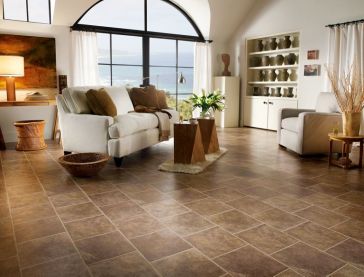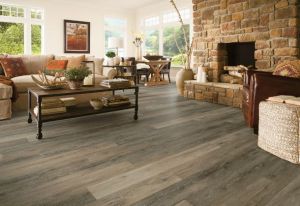If you’ve seen the interior design of many homes in the 60’s and 70’s, you’d be amazed at the power of vinyl floors to create stunning designs and effects on rooms. Nowadays, the materials used on this particular type of floor have evolved so much in terms of resiliency to use and in style diversity.
How is it made?
Basically, the manufacturing process revolves around the creation of different layers of materials. Vinyl is used as the core layer and a design layer (usually with prints) is put on top of it. The final vinyl layer is laid over the design. This is referred to as the wear layer because it is the one that will be exposed to the usual activities after installation. Experts use the rotogravure process when printing the design.
What options are available?
Design options are virtually unlimited. Manufacturers can customize designs according to the needs and requirements given by their customers. The best thing about vinyl floors is that it can be designed to simulate the looks of common flooring materials. These include stone, wood, and ceramic tiles. A homeowner can express his or her creativity through the designs that will be used on these vinyl flooring materials. The floor can be laid with vinyl sheets or tiles.

What benefits can be expected?
Homeowners can expect modern vinyl flooring materials to be highly durable even when installed on areas of their house with heavy foot traffic. The surface minimizes noise and resists liquid spills. This means that families with small kids and pets can benefit a lot from this type of floor. In terms of cost and ease of installation, homeowners will have almost nothing to worry about. Vinyl floors are less costly and less messy to install than ceramic tiles. Current industry statistics show that professional installers charge an average of $3 to $4 per square foot. Costs can vary according to the type, availability, quality, and design of the chosen material.
Are there special maintenance and care requirements?

Vinyl flooring needs to be cleaned regularly. This is to avoid the accumulation and seepage of dust into the inner layers. Sweeping, vacuuming, and cleaning with the use of wet mop should be done to keep the appearance of the floor pristine. There are cleaning agents or products that can be used to deal with deep stains. Recommendations from the installer or your local flooring material store should be sought for this matter.
When properly taken care of, your vinyl floor should last for many years before needing actual replacement.